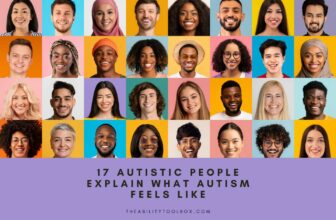If you're looking for a fun, mess-free way to help your child develop cognitive and motor skills, sensory bags offer endless possibilities for exploration and learning.
As an autistic adult, I know firsthand that sensory play is a fun way to help neurodivergent kids with cognitive development, language skills, and self-regulation. So let's dive into the world of sensory bags, explaining their benefits and how they can help children of all ages, including those on the autism spectrum. I'll also provide a step-by-step guide on how to make sensory bags, along with age-appropriate and themed sensory bag ideas.
Sensory Bag Basics
What are sensory bags?
Sensory bags, also called squish bags, are durable pouches filled with a variety of materials that engage the senses. These materials can range from liquids and gels to beads, foam shapes, and even small toys. The goal of a sensory bag is to stimulate the senses in a safe, controlled environment. They provide a tactile experience that can be manipulated with touch, allowing children to squeeze, press, and move the contents around without the mess.
What are the educational benefits of sensory bags?
Sensory bags have tremendous educational benefits when used at home or in the classroom. According to research analyzed in an article published by Michigan State University, sensory play “is the foundation of all the skills children will use in school learning to read, write and solve math and science problems. Once a child has these experiences, they are able to draw upon the body memory and cognitive memory of their experiences when faced with new situations.”
Sensory pouches can be used to teach children about different textures, colors, shapes, and even scientific concepts such as mixing colors. Sensory bags for babies, toddlers, and preschoolers aid in developing fine motor skills and hand-eye coordination. For older children, they can be used to explore more complex concepts such as density and viscosity.
Do sensory bags have therapeutic benefits?
Yes, sensory bags can be used in therapy settings including early intervention. They provide diverse sensory input and encourage toddlers and preschoolers to explore unfamiliar textures in a fun, safe way. They can be calming and soothing, making them ideal for children with sensory processing disorders, autism, or ADHD. By manipulating the contents of the bag, children can self-regulate their emotions and manage anxiety or stress.
Sensory play helps develop proprioception, the awareness of one’s body in space. Kids learn where their body parts are relative to one another and can practice picking up, holding, pulling, stretching, and squeezing a sensory bag.
Sensory play also helps babies and toddlers develop their vestibular system, which regulates balance and coordination.
If you're a special educator or occupational therapist, sensory bags can be a valuable asset in your toolkit. Whether you're working with a child who needs help developing fine motor skills, a teen struggling with anxiety, or an adult who benefits from tactile stimulation, they are a low-cost intervention that can be tailored to meet the unique needs of each individual.
How Sensory Bags Help Kids on the Autism Spectrum
Sensory bags can be therapeutic for kids and adults with autism. Autistic people have sensory processing difficulties that cause us to perceive tactile sensations differently from neurotypical people. We can be sensory-avoidant, sensory-seeking, or (most commonly) a combination of both. Often, kids on the autism spectrum need the opportunity to explore new textures at their own pace, and sensory play is a great way to do that.
Sensory Bag Safety Considerations
While sensory bags offer a world of easy entertainment and educational experiences, it's essential to consider your child's safety.
- Adult supervision should be required during sensory play of any kind.
- Check bags for any damage, such as leaks or tears, that could lead to spillage or choking hazards. Opt for non-toxic and hypoallergenic materials whenever possible.
- Teach kids how to use sensory bags properly. Show them how to gently squish and manipulate the bags to feel the different textures and items inside, and explain why they shouldn't open the bags or put the contents in their mouths.
- Be especially cautious about using any sensory toys with children and adults who have pica, a disorder that causes people to compulsively eat non-food items. They may attempt to rip the bag open and eat the contents.
- Clean bags frequently, especially sensory bags for babies. Use soap and water to wash the bag, scrubbing it gently to remove any dirt or residue. After washing, let the bag air dry before using it again.
By keeping these safety aspects in mind, you can ensure that sensory play is a source of joy, exploration, and learning for your child.
Tips for Sensory Bag Playtime
When your child is playing with sensory bags, here are some tips to keep in mind:
- Offer verbal and physical cues to guide the child through the activity.
- Permit the child to take necessary breaks if they become overwhelmed or experience sensory overload.
- Offer positive reinforcement to encourage participation and focus.
- Be aware of the child’s individual needs and adjust the activities accordingly.
Proper supervision and guidance can transform sensory bag playtime into a fun and educational experience for children of all ages.
Age-Appropriate Sensory Bag Ideas
Buy or make sensory bags to align with your child’s developmental stage and interests to guarantee an age-appropriate educational sensory experience.
Tummy Time Sensory Bags for Babies
Tummy time is essential for babies, as it helps them develop their neck, shoulder, and back muscles. Sensory bags for babies can make tummy time even more enjoyable!
Sensory Bags for Toddlers and Preschoolers
Keep babies and toddlers entertained by placing bags on their high chair tray or on the floor. Watch as they delight in discovering new textures, colors, and shapes – it’s so much fun! For toddlers and preschoolers who are standing and walking, standing play sensory bags offer a fun and interactive way to explore their senses. Tape the bags on surfaces that are chest or shoulder height of your child, ensuring they can easily fidget with the items inside. Consider using these sensory activity bags with small toys or objects to explore and manipulate, different colors and shapes to sort and match, and sensory materials like rice, sand, or playdough.
Sensory Bags for Teens and Adults
You're never too old for sensory play! Squish bags and I Spy bags are great for teenagers and adults. They are perfect portable stim toys and desk toys for people with ADHD, autism, anxiety, and other forms of neurodivergence. You can even buy sensory bags that double as wallets and purses! By choosing bags tailored to the interests and needs of older children, teens, and adults, you can ensure an enjoyable experience that caters to their unique sensory preferences.
For more handmade I Spy bags teens and adults will love, check out Quiltology by Quincy, Our Sew Good Life, and Reggio Baby. For purses and wallets, visit Electric Bubblegum.
Premade Sensory Bags: A Convenient Option
Premade sensory bags are a convenient option for those who may not have the time or resources to create their own sensory bags. These sensory bags for babies, kids, and beyond come pre-filled with a variety of materials, providing a ready-to-use sensory play tool. They are available in a wide range of themes and designs, catering to different age groups and interests.
Premade sensory bags can also be a great gift idea for birthdays or holidays. They offer a fun and educational play option that can keep children occupied for hours. So, if you're looking for a hassle-free way to provide your child with more sensory stimulation and play opportunities, premade sensory bags could be the perfect solution.
I Spy Bags with Hidden Objects
Hidden object sensory bags, also known as I Spy bags, are like a pocket-sized treasure hunt. These pouches contain a plain filler (often rice) mixed with a few colorful objects and a clear window on one side. The goal is to seek and find objects and then push them into view by manipulating the contents with your fingers. They make a great screen-free fun activity for all ages.
Looking for more I Spy bags? Check out these small businesses: Joyful Bundles, Time Worth Wasting, and Janet R.
Themed Sensory Bags
These I Spy bags are themed around seasons, holidays, and activities so you can keep playtime fresh and relevant.
Educational Sensory Bags
These bags are designed to teach important concepts such as numbers, letters, and facial expressions. They can be especially helpful for autistic children and kids with developmental delays who are kinesthetic and/or visual learners.
Fabric Sensory Bags
Fabric sensory bags are a safer alternative to plastic bags for babies, toddlers, and others who might try to rip them open. They are often filled with rice or other grains that make soothing sounds and can provide tactile sensory input through the fabric.
Water Sensory Pouches
A water sensory pouch contains liquid plus water beads and/or small toys, and is designed to be squeezed for hours of rewarding sensory play. Water bags must always be used with supervision, especially for babies and toddlers, as they may contain hair gel, baby oil, detergent, or other liquids that should never be consumed.
See more squish bags at SensiPal Store.
Step-by-Step Guide: Creating Your Own Sensory Bag
Ready to get creative? Here's a quick DIY sensory bags tutorial.
Preparing the Bag
Start by selecting a high-quality resealable plastic bag, like a ziplock bag, ensuring it has the appropriate size and strength to accommodate the fillers you’ve chosen.
Consider double bagging or using thick clear vinyl for added security and durability. This will help prevent any leaks or spills during playtime.
Adding Fillers
Now it’s time to get creative with the sensory bag fillers! Depending on your child’s age and interests, you can include a variety of items such as:
- beads
- glitter
- foam shapes
- small toys that fit your chosen theme
- Squishy materials like water beads
- Hair gel, baby oil, or vegetable oil to make the bag squishy
Make sure the small items you choose don’t have any sharp edges that could puncture the bag. You can also use liquids, clear gel, or goo to create a squishy bag, with hair gel being the most popular choice for a super squishy texture. You can add food coloring to the liquid to enhance your chosen theme.
When adding fillers, keep in mind the age and developmental stage of your child, as well as their sensory preferences. Babies may enjoy soft fabric sensory bags with different textures, while older children might prefer more complex bags with small toys or objects to explore and manipulate. DIY sensory bags for teens and adults can include stress-relief bags with squishy balls, scented bags with lavender or essential oils, and tactile bags with slime or kinetic sand. Let your imagination run wild, and remember to have fun with it!
For more fillers and tiny toys, check out Dinky Doodads and Speech and Smile, a small business owned by a pediatric speech-language pathologist.
Sealing and Finishing
After filling your sensory bag with the selected materials, carefully eliminate any excess air from the bag and seal it securely. To minimize the risk of mess or for younger children, consider sealing the entire bag with duct tape on all sides, ensuring a strong and leak-proof seal. Double-check the bag for any weak spots where the fillers could escape, and if needed, re-seal them using duct tape.
Now you're ready to make your own sensory bags. Have fun and watch your child’s imagination and sensory skills grow!
More Sensory Bag Ideas
I hope you've enjoyed this list of my favorite sensory bags that I chose to feature. Whether you decide to make sensory bags or buy them ready to go, your little one (or not so little one) is sure to appreciate the joy found in a simple bag!
Check Out More Sensory Play Resources in The Ability Toolbox
- Sensory Bottles for Kids and Adults
- Sensory Bags for Babies, Toddlers, and Beyond
- Sensory Bins for Toddlers and Preschool Kids
- Sensory-Boosting Therapeutic Gifts for Kids with Autism
Hey I'm Olivia and I'm a proud Autistic woman. My special interests are cats, stim toys, and electronic music! I love to write and help other Autistic adults find ways to enjoy life in this LOUD world!
Dr. Wilson graduated from Rosalind Franklin University of Medicine and Science and completed her residency in Internal Medicine at Advocate Good Shepherd Hospital in Barrington, IL. Dr. Wilson specializes in providing culturally competent and trauma-informed care to patients with physical disabilities. In addition to her private practice, she works as a science communicator, teaching health literacy to middle school and high school students in her local school district.



















































